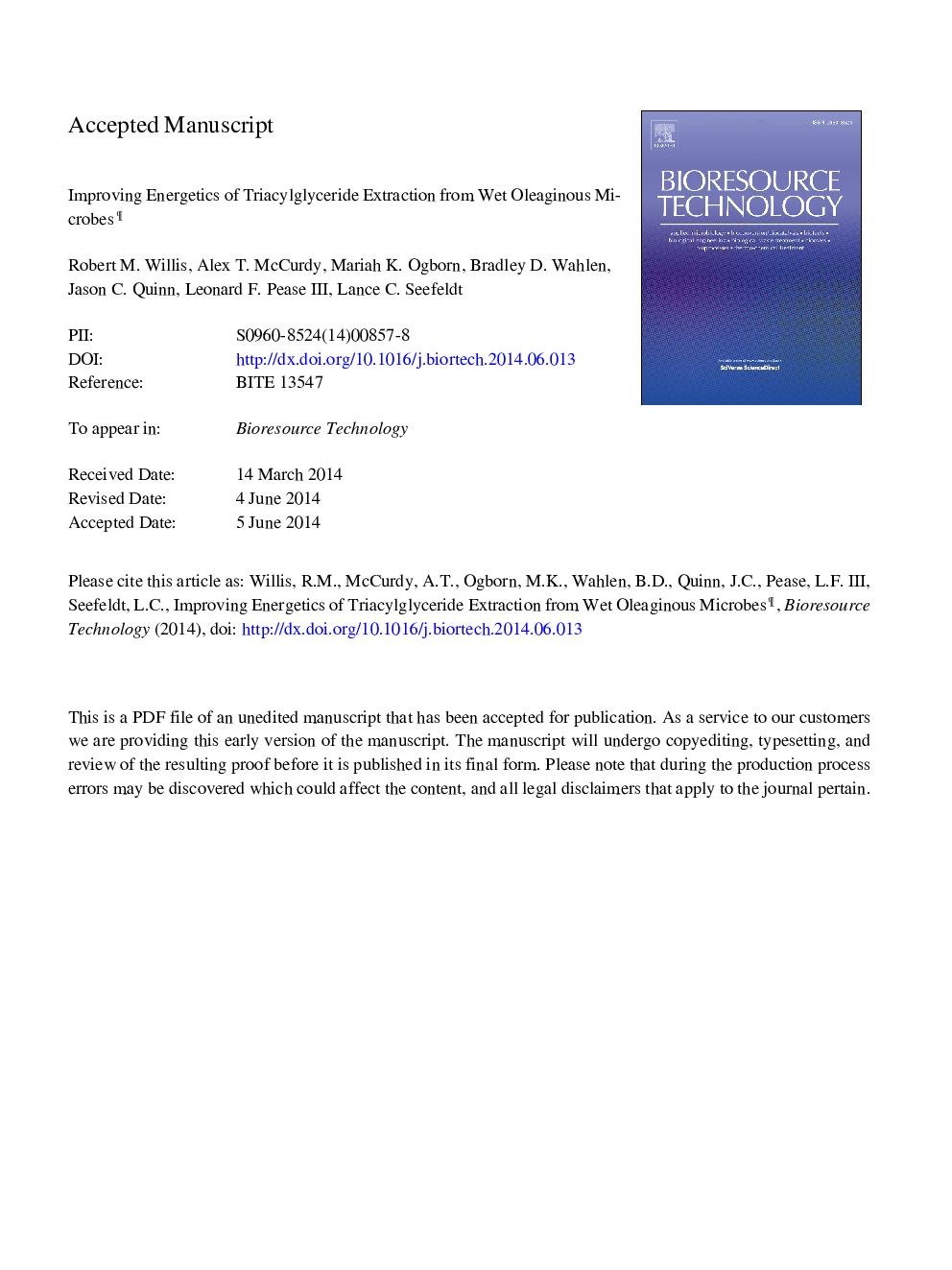| Article ID | Journal | Published Year | Pages | File Type |
|---|---|---|---|---|
| 7076809 | Bioresource Technology | 2014 | 39 Pages |
Abstract
Oleaginous microbes can upgrade carbon to lipids, which can be used as a feedstock to produce renewable replacements for petroleum-based compounds. Efficient extraction of lipids from oleaginous microbes typically involves dewatering and drying of the biomass. Problematically, drying often requires an amount of energy approaching that available from the cells. Here, we report an approach for the high efficiency extraction of triacylglycerides (TAG) from wet oleaginous microbes, bypassing the drying process. Solvent candidates for extraction of wet oleaginous biomass were identified using ASPEN's databases to determine an activity based selectivity coefficient. Optimal extraction conditions were determined which resulted in >91% extraction of TAG from yeast, bacteria, and microalgae. Experimental data was integrated into system models to evaluate the energetics of the processes compared to traditional extraction methods. The net energy ratio (NER) of a traditional dry solvent extraction is 0.84, whereas the approach presented here has a NER of 0.34 for yeast.
Related Topics
Physical Sciences and Engineering
Chemical Engineering
Process Chemistry and Technology
Authors
Robert M. Willis, Alex T. McCurdy, Mariah K. Ogborn, Bradley D. Wahlen, Jason C. Quinn, Leonard F. III, Lance C. Seefeldt,
